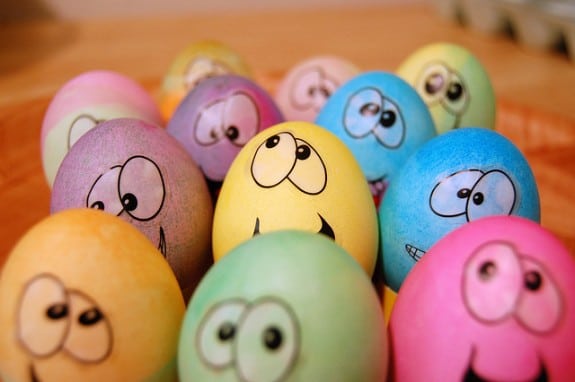“In the visual arts, color theory or color theory is a body of practical guidance to color mixing and the visual effects of a specific color combination.”
There are also definitions (or categories) of colors based on the color wheel: primary color, secondary color[1] and tertiary color. Although color theory principles first appeared in the writings of Leone Battista Alberti (c.1435) and the notebooks of Leonardo da Vinci (c.1490), a tradition of “color theory” began in the 18th century, initially within a partisan controversy around Isaac Newton’s theory of color (Opticks, 1704) and the nature of primary colors. From there it developed as an independent artistic tradition with only superficial reference to colorimetry and vision science.” -Color theory. (2016, July 7). In Wikipedia, The Free Encyclopedia. Retrieved 13:47, July 13, 2016 (Full Wikipedia Article Here)
Why is Color Theory Important to Your Business?
Businesses know advertising is important and strategies are put in place to determine budget and tactics. However, many businesses may not consider a very important aspect when it comes to their business advertising…Color Theory. The psychology factor in business has been used for generations, which we have seen through things like subliminal messages. Utilizing the different forms of psychology in business advertising is yet another way to reach your customers and increase ROI. With color theory in advertising, the choice of color, hue, tone and so on can have direct effects on the viewer’s decision to click, like, purchase and so on. This comes into play with quality logos and even the re-designing of a logo.
The Human Brain & Colors
Color affects all species that go as deep as protection of self, but for humans, these effects are much stronger. For example, the color red can indicate danger, war, power, energy, passion, love and more. Why? Think of the color of blood or fire.
These examples reflect a direct correlation to why the human brain subconsciously feels the items from the list above. Color can even affect a person’s diet. It might seem obvious that the color green would signify food, but what about hunger? Studies have shown that the color blue decreases hunger, while a deeper red color can increase hunger. Makes you think twice before deciding on what color to paint your kitchen. Other colors like yellow have been researched and found to cause nausea and anxiety. For this reason, businesses in aviation – e.g. airports – avoid using the color yellow. See for yourself the next time you take a trip!
Different color schemes create emotional connections in humans, which reiterates the importance of choosing the right color for business advertising. From logos to ads and so much more, choosing the best color choice for your brand will undoubtedly increase results.
Color Tips for Advertising
Analyze color contrast
Create logos in vector
Choose and test your color palette wisely
Examples of Color Theory in Brand Recognition
Red = Hunger
ie) McDonald’s
Blue = Social/Friendly/Trustworthy
ie) Facebook, Twitter
Black = Powerful
ie) Chrysler or other major auto brands
Emotional Response Triggers in Color Theory

RED
Positive Emotions: Strength, courage, energy, warmth, survival in danger, masculinity, excitement and stimulation.
Negative Emotions: Strain, aggression, defiance and visual impact.
BLUE
Positive Emotions: Trust, communication, coolness, intelligence, serenity, efficiency, calm, duty, reflection, and logic.
Negative Emotions: Unfriendliness, coldness, aloofness, and lack of emotion.
YELLOW
Positive Emotions: Self- Esteem, friendliness, optimism, creativity, confidence, emotional strength and extroversion.
Negative Emotions: Depression, fear, irrationality, emotional fragility, nausea, and anxiety.
GREEN
Positive Emotions: Peace, success, rest, reassurance, refreshment, harmony, universal love, balance restoration, equilibrium and environmental awareness.
Negative Emotions: Blandness, stagnation, enervation (drained of energy) and boredom.
VIOLET
Positive Emotions: Luxury, quality, vision, truth, spiritual awareness, authenticity and containment.
Negative Emotions: Inferiority, introversion, suppression, and decadence.
ORANGE
Positive Emotions: Warmth, sensuality, physical comfort, abundance, passion, security, and fun.
Negative Emotions: Frustration, deprivation, immaturity, and frivolity.
PINK
Positive Emotions: Love, femininity, sexuality, nurture and physical tranquility.
Negative Emotions: Physical weakness, inhibition, emasculation and emotional claustrophobia.
GREY
Positive Emotions: Psychological neutrality.
Negative Emotions: Depression, dampness, hibernation, lack of confidence and lack of energy.
BLACK
Positive Emotions: Glamour, emotional safety, power, sophistication, substance, security, and efficiency.
Negative Emotions: Menace, oppression, heaviness, and coldness.
WHITE
Positive Emotions: Cleanness, clarity, hygiene, purity, simplicity, sterility and sophistication.
Negative Emotions: Elitism, coldness, unfriendliness, and barriers.
BROWN
Positive Emotions: Earthiness, nature, warmth, support, reliability, and seriousness.
Negative Emotions: Lack of sophistication, heaviness, and lack of humor.
If you miss some of our perspective posts, sign-up for our monthly news recap! It includes all of LuccaAM’s perspectives, videos, and social media recaps! Just click on the bottom left corner and enter your e-mail.
FAQs
Why is color theory important for business advertising?
Color theory helps businesses create emotional connections with their audience. The right color choices can influence customer behavior, such as encouraging clicks, purchases, or brand loyalty. Understanding how different colors evoke specific emotions can enhance the effectiveness of logos and advertising strategies.
How does the color red affect consumer behavior?
Red is a powerful color that evokes strong emotions like energy, passion, and urgency. It can also stimulate appetite, which is why many food brands, like McDonald’s, use red in their branding to encourage hunger and attract attention.
What emotions does the color blue evoke in brand recognition?
Blue is often associated with trust, calmness, and communication. Brands like Facebook and Twitter use blue to convey friendliness, reliability, and professionalism, making it a popular choice for social platforms and businesses that want to establish trust with their audience.
Can choosing the wrong color for my brand hurt my business?
Yes, using the wrong color can create unintended negative emotional responses. For example, yellow can cause anxiety or nausea in certain contexts, while black can feel oppressive or cold if overused. It’s important to carefully choose colors that align with the emotions and values your brand wants to convey.